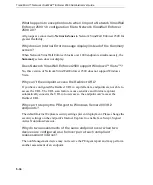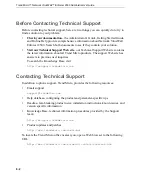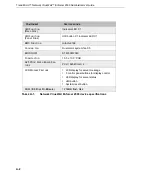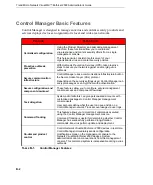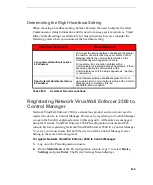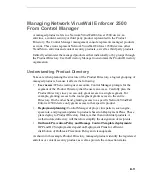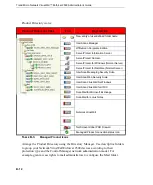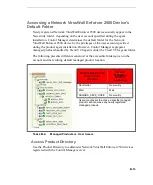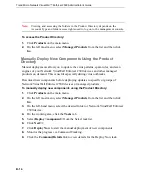
Trend Micro Network VirusWall™ Enforcer 2500 Administrator’s Guide
B
-
4
The agent footprint required to transfer information is much larger in XML compared
with other data formats.
Data processing performance is slower due to the larger data footprint.
Packet transmissions take longer and the transmission rate is less than other data
formats.
With the issues mentioned above, MCP's data format is devised to resolve these
issues. The MCP's data format is a BLOB (binary) stream with each item composed
of name ID, type, length and value. This BLOB format has the following advantages:
•
Smaller data transfer size compared to XML:
Each data type requires only a
limited number of bytes to store the information. These data types are integer,
unsigned integer, Boolean, and floating point.
•
Faster parsing speed:
With a fixed binary format, each data item can be easily
parsed one by one. Compared to XML, the performance is several times faster.
•
Improved design flexibility:
Design flexibility is also been considered since
each item is composed of name ID, type, length and value. There will be no strict
item order and compliment items can be present in the communication protocol
only if needed.
In addition to applying binary stream format for data transmission, more than one
type of data can be packed in a connection, with/or without compression. With this
type of data transfer strategy, network bandwidth can be preserved and improved
scalability is also created.
NAT and Firewall Traversal Support
With limited addressable IPs on the IPv4 network, NAT (Network Address
Translation) devices have become widely used to allow more end-point computers to
connect to the Internet. NAT devices achieve this by forming a private virtual
network to the computers attached to the NAT device. Each computer that connects
to the NAT device will have one dedicated private virtual IP address. The NAT
device will translate this private IP address into a real world IP address before
sending a request to the Internet. This introduces some problems since each
connecting computer uses a virtual IP and many network applications are not aware
of this behavior. This usually results in unexpected program malfunctions and
network connectivity issues.



